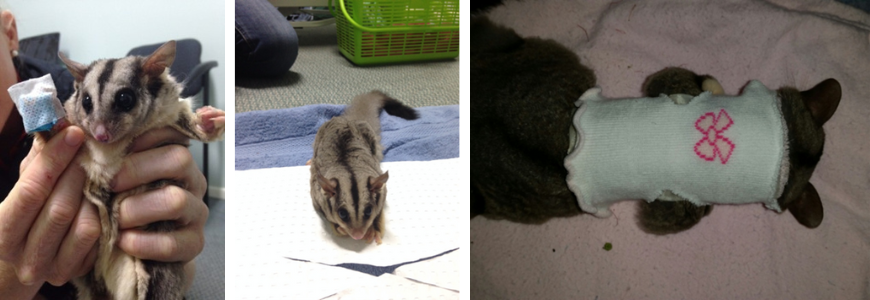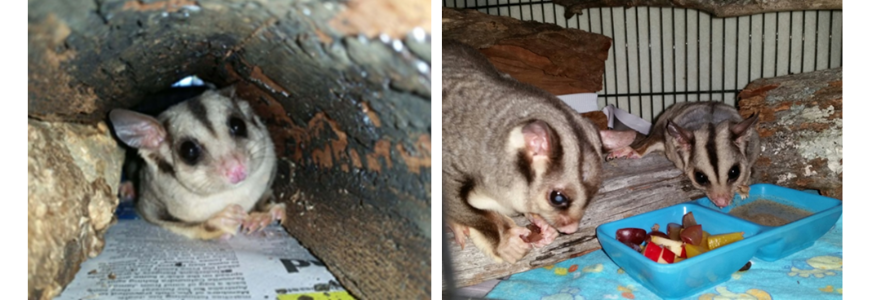Protect your pets: Common toxic plants to avoid
How to identify toxic plants and recognise signs of pet poisoning.
Read more1 August 2023
Australian Physiotherapy Association, a trusted partner of Petcover has provided the below case study of their treatment of a Sugar Glider.
Petcover may cover these exotic pets, only in the Australian states where they can be legally kept as pets and the government requirements for ownership are met.
This Case Study is particularly captivating, and we are amazed by the extent and species of patients assisted by the Australian Physiotherapy Association.
The local vet surgery was presented with a little female sugar glider (Petaurus breviceps) who had been mauled by a cat and had sustained a fracture of one of the thoracic vertebrae.
The sugar glider is a small gliding possum, earning the name from their love of eating nectar and flowers – but they eat insects too. The gliding membrane, which enables them to glide from tree to tree, extends from wrist to ankle.
The sugar glider can normally glide up to 90 metres between trees. This little injured marsupial could not crawl around properly, let alone glide.
The vets initially managed the injury with medication, a little body cast for fracture bracing, and confinement.
Physiotherapists were called in after a couple of weeks, as rehabilitation would be beneficial, if not crucial, to this sugar glider’s survival.
The sugar glider had neurological dysfunction not dissimilar to a paraplegic, although she did have some hind limb function. She could not use the right forelimb very well.
Physiotherapy involved the gentle mobilisation of the limbs and spine, a little ‘home’ exercise program, and a small splint for the right front paw, to stop the glider from developing a contracture (curling of the paw).
The sugar glider was assisted in weight transfer exercises and gait. As this was a native animal, the use of food such as insects and flowers, was the motivating substance for the exercises.

After three treatments, the sugar glider was able to walk around and climb up onto small logs and branches, despite having a mild contracture of the right fore ’hand’. She was able to reach and consume the provided food, clean herself, and build and structure nests.
However, she was unable to return to the wild as she was unable to glide – the lack of motor control meant she couldn’t expand the right-hand wing or membrane.
The sugar glider was able to be introduced into a cage with another glider, where she could climb onto and into logs and branches and live a good life, even though she could not glide.
This was considered a good outcome for the sugar glider with a neurological injury.

*Please note that sugar gliders can only be legally kept as pets within Victoria, South Australia, and the Northern Territory and a wildlife specimen license must be obtained. They are not allowed to be kept as pets in Western Australia, New South Wales, the Australian Capital Territory, Queensland or Tasmania. NO wildlife may be taken from the wild in any State, it must be obtained from a legal source a private wildlife breeder, wildlife park, or zoo. Please refer to your state government wildlife regulations.